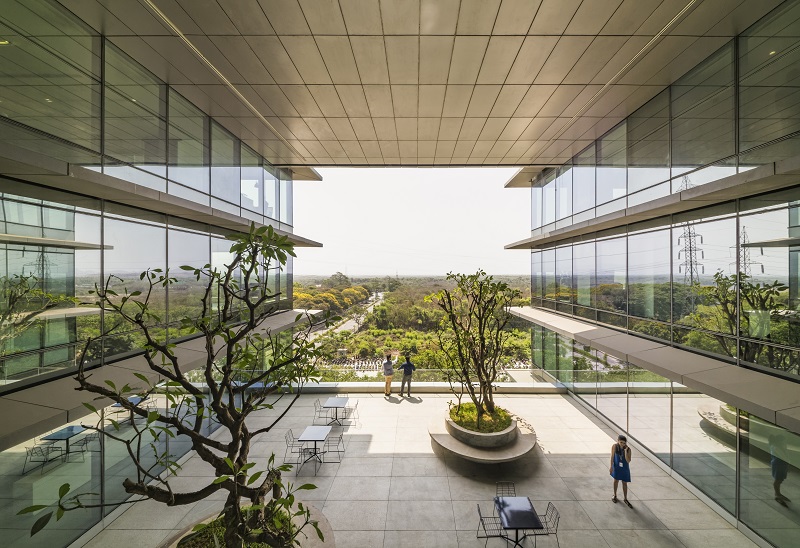Cities are engines of economic growth, cultural engagement and can be key to a sustainable future. As India urbanises rapidly to the 40% mark, we have an opportunity to view responsible development planning and architecture as agents of change instead of contributing to the problem. Einstein once said – “Problems cannot be solved at the same level of awareness that created them.” A new awareness is needed to acknowledge the urgency of the problem, its compounding nature and consequences. Our planning, design and architecture has long contributed to the problem of building concrete jungles. While the recent focus on sustainable architecture has strengthened the need for judicious resource optimization and reduction in usage intensity, we are currently far from evaluating architectural solutions for their ability to generate environmental positives. We require a new awareness for a solutions based approach that responds to natural systems that exist on a site as a precursor to any design approach.
Given that sustainable development is a shared responsibility, our first site response could be to ‘preserve’ – safe guard existing natural habitats, prioritize their long-term preservation and create as minimal an intrusion as required within the design brief. A second response could be to ‘conserve’ – judicious use of natural habitat and resources; and the third ‘regenerate’- set up systems through architecture and planning for nature to integrate with the built environment, evolve, grow, die and regenerate responsibly. Robust planning, site focused design interventions, responsive policies with monitoring and a prototype to scale approach can help preserve, conserve and regenerate urban green ecosystems while building sustainably. Connecting these green ecosystems as we build responsibly allows for a better engagement with the land and its natural forces that will in turn foster a positive impact on our wellbeing and enhance liveability that is architecture’s primary goal.

Armed with Einstein’s theory of awareness, architects can integrate their work within a larger urban framework to create localised responses that systematically identify and relieve biodiversity/natural system stresses by integrating walkable green spaces especially as natural air filtration systems; recharge natural water systems and build for future resilience. Localized interventions such as urban farms in shared landscaped spaces can also help bring back focus on connecting with the land for nourishment. Such sensitive design and architecture within established urban networks could restore existing natural systems or create new microclimates attracting biodiversity and help alleviate the stresses and strains of mundane urban living.
This is an integrated effort with development planners encouraged to map existing biodiversity, typography and hydrology through scientific enquiry. Architects would benefit from a more holistic overview through site research, integrated engineering and material selection. A regenerative design approach sets a new definition of sustainability for projects and requires research and enquiry before design response. Detailed site studies mapping land form, water run offs, precipitation patterns coupled with an increasing prevalence of extreme weathers events can establish a more nuanced design brief with clearly articulated sustainability goals. This would allow us to move beyond building certifications and ratings that focus on minimizing harm to a more future focused approach predicated on replenishment.
Developments can therefore be assessed for the ability to regenerate environmental positives – oxygen, water, pollination, food, biodiversity, and other such key health parameters to positively impact communities. This would ring true to another statement that Einstein made – “In the middle of difficulty lies opportunity” – to create unique experiential developments that use these principles of regenerative architecture and planning to redefine sustainability for urban built environments.


